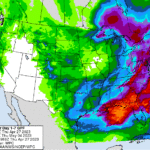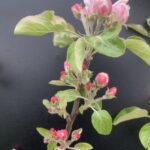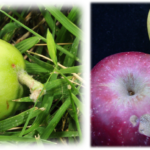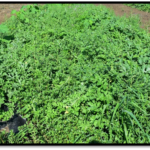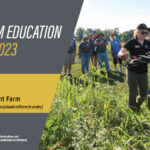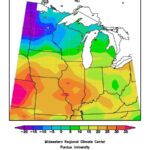We received a freeze warning in Vincennes last Sunday with a predicted low temperature of 33 °F. Growers in southern Indiana reported minimal damage on plants covered with floating row covers. But significant damage was observed in fields that were not protected or covered with a thin layer of floating row cover. At Southwest Purdue[Read More…]
Found 837 Articles
Despite the cooler weather we’ve experienced the last couple of weeks, temperatures from April 1st through 26th averaged 2.3°F above normal for the entire state (Figure 1). Departures have steadily declined as the weather pattern shifted to cold and dry as a result of an upper atmosphere blocking pattern. Since April 21st, temperatures averaged 9-12°F[Read More…]
At the Meigs Horticultural facility on April 24th we experienced freezing temperatures from 2 am until 7 am, with a low of 26.8 degrees Fahrenheit for one hour. The damage to fruit crops on the farm is scattered depending on varieties. A rough estimate would be 10% cold damage on the crops. The growth stages[Read More…]
The plum curculio (Conotrachelus nenuphar) is a small “snout” beetle (also known as a weevil – one of my favorite beetle groups!) that will feed on apples, peaches, pears, plums, and cherries. Both adults and larvae have chewing mouthparts and can damage fruits; adults by feeding and laying eggs in newly set fruit and larvae[Read More…]
We’re getting close to the time when growers need to make chemical thinning decisions – for many the most perplexing and risky decision they will make all year. This is usually a tricky call to make. Remember that only about 5-10% fruit set is usually enough for a full crop. In other words, 90 out[Read More…]
Once flowers open in the spring, we’re hoping for warmer weather so the bees will transfer pollen and for rapid pollen tube growth. As we all know, apples require cross pollination, so for example Golden Delicious pollen will not fertilize Golden Delicious flowers. We rely on bees and other insects to transfer pollen from one[Read More…]
It’s that time of year to make sure you have all your fruit insect monitoring tools on hand and ready to place out in the orchard. Whether you’re already experienced, or just learning how to use insect monitoring tools, they can be big a help in detecting the presence and activity of important pest insects[Read More…]
What is Optogen®? The active ingredient in Optogen® (Figure 1) is bicyclopyrone. Corn growers may recognize bicyclopyrone as one of the four herbicide ingredients in Acuron® herbicide. Bicyclopyrone is a Group 27 herbicide with both pre-emergence and post-emergence activity on select weed species. Group 27 herbicides inhibit an enzyme known as “HPPD”, resulting in an[Read More…]
The 2022 Purdue Small Farm Education Field Day was a big success. Nearly 72% of attendees reported that they learned something new. Nearly half indicated they plan to adopt recommended practices for diversified farming systems, and over a third (36.0%) plan to adopt recommended practices for creating, improving, or strengthening their business. Half (52.0%) indicated they plan[Read More…]
Much like March, April has gotten off to a warm start. Through the first eleven days, the state average temperature was 5.1◦F above the 1991-2020 climatological normal (Figure 1). High temperatures ranged from 60-70◦F, which was anywhere from 3-7◦F above normal. Low temperatures were not as anomalous, but slightly above normal for most of the[Read More…]
Purdue University prohibits discrimination against any member of the University community on the basis of race, religion, color, sex, age, national origin or ancestry, genetic information, marital status, parental status, sexual orientation, gender identity and expression, disability, or status as a veteran. This material may be available in alternative formats. 1-888-EXT-INFO Disclaimer: Reference to products in this publication is not intended to be an endorsement to the exclusion of others which may have similar uses. Any person using products listed in this publication assumes full responsibility for their use in accordance with current directions of the manufacturer.
